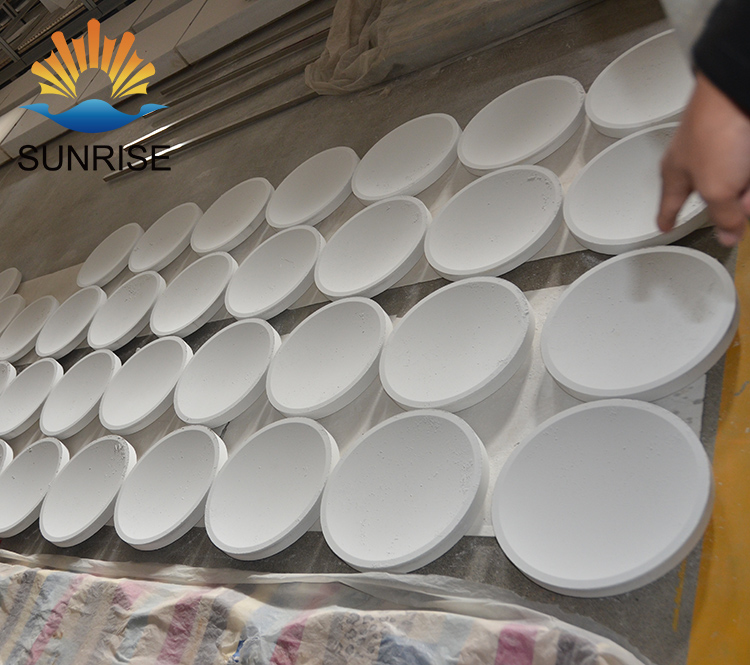What defects will refractory bricks cause in glass?
According to the research of Sunrise Refractories Group, refractory bricks will cause the following defects in glass:
1. Stones
When the larger particles of the refractory brick fall into the glass melt and cannot be completely dissolved by the melt, "stones" appear in the glass. Particles with specific gravity will settle to the bottom of the pool. Insoluble materials such as ZrO2 can also be dispersed into very small particles without causing harm.
The alkali in the glass will interact with the alumina-containing refractory bricks to form feldspar materials. Due to the difference in thermal expansion, flakes are formed. After peeling off, new flakes are formed to cause harm. The unsintered solid particles in the ramming material may also enter the glass and form stones.
2. Bubbles
All organic impurities attached to the surface of the refractory brick will be burned to generate bubbles. Some inorganic building materials also tend to generate bubbles at the beginning. In addition, the air discharged from the holes of the refractory bricks can also cause bubbles. Carbon-containing impurities are always the source of bubbles.
Metallic iron itself has no tendency to generate bubbles, and the carbon contained in it has this tendency. Substances with redox potential can also generate bubbles due to changes in the oxidation conditions in the melt. Zirconium bricks also tend to generate bubbles in the early stages of use. However, through the action of alkali in the glass, the quality of the Portuguese is improved, and bubbles are no longer generated.
3. Defects formed indirectly
The alkali in the glass and the material containing Al2O3 combine to grow stone materials. In a certain temperature range, this substance can not be completely dissolved leaving "stones". The effect is similar to KZ-brick. Alumina may dissolve or semi-dissolve, leaving ZrO2 as a "stone". The aggressive components of glass may dissolve SiO2 in zircon products and leave ZrO2 stones. If the particles are large enough, stones will appear in the glass. The above-mentioned particles will also be produced on the eroded grid brick. Combustion air may be caused by blowing them (parts of lattice bricks, damaged refractory bricks or their components) into the melt when they pass through the lattice brick masonry. The formation of "stones". Stones may also be formed by refractory bricks falling from the upper structure of the kiln or the top of the stone.
Pre:
Brief introduction of the advantages of glass mold brick
Next:
How to perform hot repair on the bricks of the regenerators

